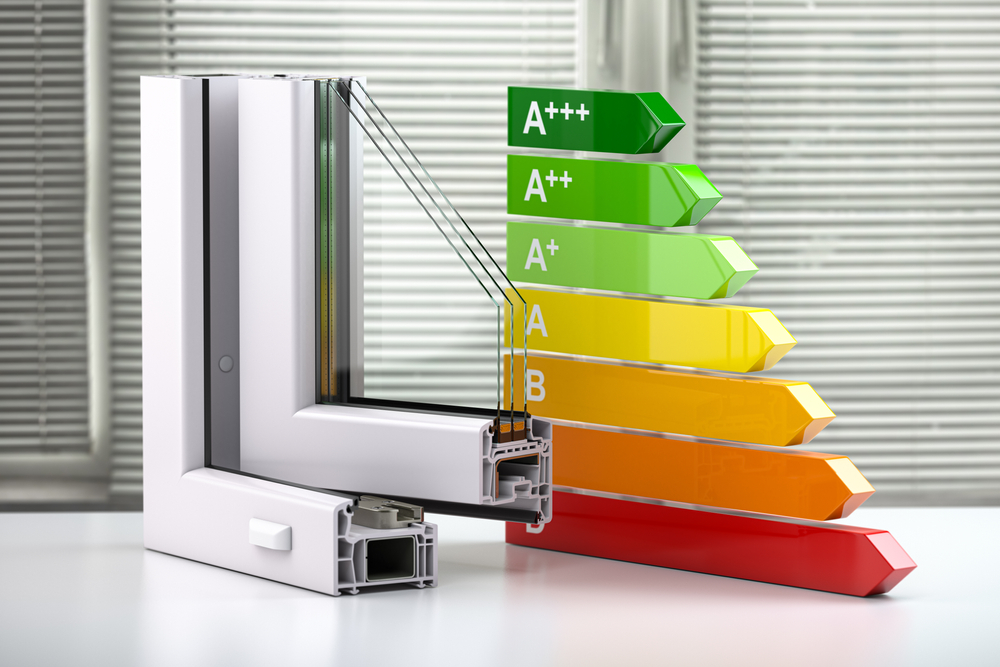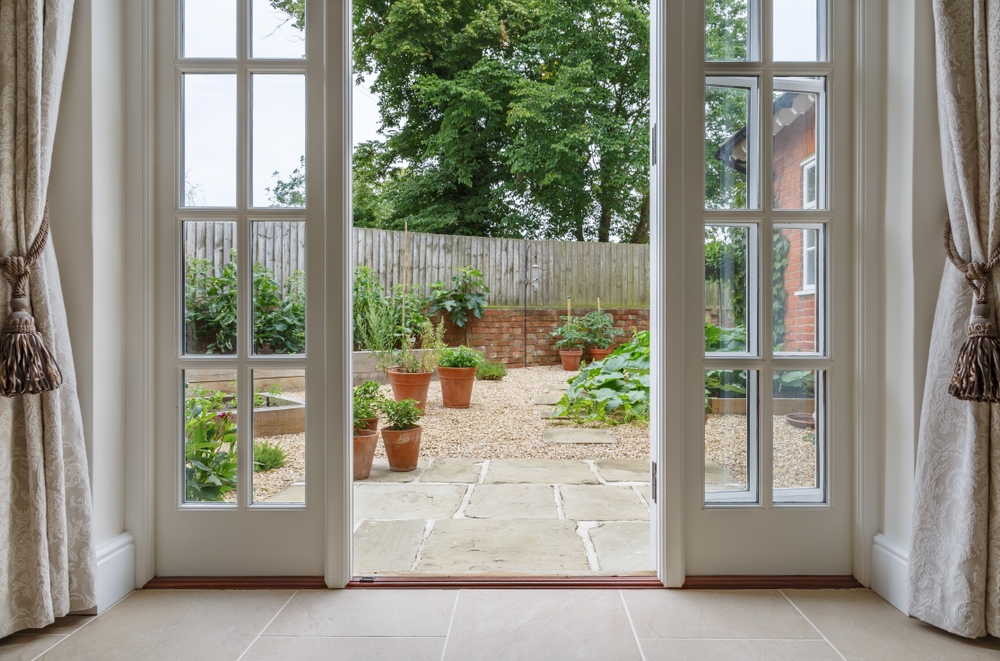Energy-Efficient French Doors Add Ambiance and Save Money
French doors are typically used to close off rooms with a more formal flair and also allow for homeowners to retain the flow of an open floor plan. French doors are commonly used as the point of entry to decks and patios; these doors include a wood border around top-to-bottom window panes.
French doors feature a dual design, meaning there are actually two different doors. However, in some setups only one door is functional. Since windowed doors can allow for air leaks, homeowners might choose energy-efficient French doors, which create the same sophisticated ambiance but help provide better insulation.
What helps doors save energy in the home? Energy-efficient French doors typically offer a better U-Factor or Solar Heat Gain Coefficient (SHGC). These doors are rated by the National Fenestration Rating Council (NFRC).
Windows and doors with windows (like French doors) will include an NFRC label that offers the following information:
- U-Factor
- Solar Heat Gain Coefficient
- Visible Transmittance
- Air Leakage
The U-Factor
The U-Factor refers to the efficiency of the window to keep heat inside the home. The numbers for the U-Factor range from 0.2 to 1. The NFRC explains that homeowners want the lowest number possible. U-Factor is important to those who live in climates with colder weather.
Solar Heat Gain Coefficient
The SHGC refers to how efficiently the glass can keep out heat. Energy-efficient windows, French doors and sliding glass doors should insulate the home from the brunt of the sun’s rays. The SHGC ranges from 0 to 1. Again, low numbers are the best. SHGC is an important factor for those living in warm climates.
Visible Transmittance
The NFRC explains that this refers to how much light can enter the home. While homeowners don’t want the sun to heat up the home, they will probably still want to enjoy some sunlight. The Visible Transmittance ranges from 0 to 1. The higher the number, the more light the glass lets in the home to illuminate a space.
Air Leakage
The final factor that homeowners need to review on the NFRC label is the air leakage. The best windows won’t let much air into the home. The numbers are less than or equal to 0.3; low numbers are the best.

Factoring Up all the Factors
The best French doors will include windows that keep heat in the home, don’t let extra heat warm up the home during summer, allow sunlight and don’t allow air leaks. If homeowners think this is quite a stacked list, these factors are why certain windows and patio doors (like French doors) are considered energy-efficient and why others are energy drains.
Shopping for energy-efficient French doors is a bit easier for homeowners, as these doors should be marked with an ENERGY STAR label. However, the location of the home and the climate might have homeowners focusing more on one factor than another.
ENERGY STAR also offers a list of the most energy-efficient patio doors. French doors are among those on the list, but homeowners might need to scroll through the options to find all their French door options.

Why Energy-Efficient French Doors are the Best Option
Some homeowners might be interested in replacing their current porch or patio doors with French doors. Choosing energy-efficient French doors is a smart option because these doors will ensure that warm air stays in, hot air stays out during hot days and air doesn’t seep into the home to cause drafts.
Air leaks aren’t uncommon for doors and windows. Unfortunately, when hot or cold air sneaks into the home during days of extreme heat or bitter cold, these leaks will cause the HVAC to work harder and increase the energy use of the home. The homeowner might see a rising electricity bill.
The price of energy-efficient French doors could be higher than a standard option, but, over time, homeowners could save money on their energy bill. Since heating and cooling tends to use the most energy in the home each month, these doors can help drive down energy waste by helping take the stress off the HVAC.
Can Homeowners Make French Doors More Energy Efficient
Homeowners who have French doors in their home might wonder if there are any DIY tips to help increase the energy-efficiency of their door. Since French doors are mostly glass, the DIY energy-efficiency options might be a bit more limited. However, homeowners could:
- Seal up gaps around the doors
- Use window film to add extra insulation
- Make sure doors stay closed
One of the best ways to ensure that air leaks don’t cause energy costs to soar is to seal up any gaps around the doors. Weather stripping could be used to close these gaps; homeowners can find weather stripping at home stores.
There also are window seals and kits to provide extra insulation over the windows of French doors. Homeowners might have to do a little research to find the best option for their door design, though.
The number one way to aid in the energy-efficiency of doors is simply by keeping them closed. Don’t let kids or guests leave French doors ajar. Open doors lead to the outdoor temperature warming up or cooling down the home. Keep doors closed, cover the windows and seal up those gaps to help stop energy leaks.


